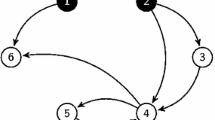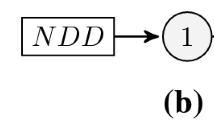Abstract
While there is a growing need for kidney transplants to treat end-stage kidney disease, the supply of transplantable kidneys is in serious shortage. Kidney paired donation (KPD) programs serve as platforms for candidates with willing but incompatible donors to assess the possibility of exchanging donors, thus opening up new transplant opportunities for these candidates. In recent years, non-directed (or altruistic) donors (NDDs) have been incorporated into KPD programs beginning chains of transplants that benefit many candidates. In such programs, making optimal decisions in transplant exchange selection is of critical importance. With the aim of improving the selection of chains beginning with an NDD, this paper introduces a look-ahead multiple decision strategy to select chains that are easy to extend in the future. Simulation studies are adopted to assess performance of this strategy. Taking into account the extensibility of chains increases the number of realized transplants.









Similar content being viewed by others
Notes
There are four principal blood types: A, B, AB and O. Type O can donate to any of the four blood types. Type B can donate to type B and AB, type A can donate to A or AB, and type AB can only donate to type AB. Candidates of blood type O tend to be disadvantaged since they can receive only from an O donor, but O donors can give to any blood type.
References
Abraham DJ, Blum A, Sandholm T (2007) Clearing algorithms for barter exchange markets: Enabling nationwide kidney exchanges. In: Proceedings of the 8th ACM conference on Electronic commerce. ACM, pp 295–304
Ashlagi I, Gilchrist DS, Roth AE, Rees MA (2011) Nonsimultaneous chains and dominos in kidney-paired donationrevisited. Am J Transplant 11(5):984–994
Bray M, Wang W, Song PK, Leichtman A, Rees M, Ashby V, Eikstadt R, Goulding A, Kalbfleisch J (2015) Planning for uncertainty and fallbacks can increase the number of transplants in a kidney-paired donation program. Am J Transplant 15(10):2636–2645
Ellison B (2014) A systematic review of kidney paired donation: Applying lessons from historic and contemporary case studies to improve the US model. Whart Res Sch J (107). http://repository.upenn.edu/wharton_research_scholars/107/
Fumo D, Kapoor V, Reece L, Stepkowski S, Kopke J, Rees S, Smith C, Roth A, Leichtman A, Rees M (2015) Historical matching strategies in kidney paired donation: the 7-year evolution of a web-based virtual matching system. Am J Transplant 15(10):2646–2654
Li Y, Song PXK, Leichtman AB, Rees MA, Kalbfleisch JD (2014) Decision making in kidney paired donation programs with altruistic donors. SORT (Barc) 38(1):53
Organ Procurement and Transplantation Network (2010) Proposal to update HLA equivalences tables. http://optn.transplant.hrsa.gov/PublicComment/pubcommentPropSub_261.pdf
Organ Procurement and Transplantation Network (2015) Organ procurement and transplantation network. http://optn.transplant.hrsa.gov
Park K, Moon JI, Kim SI, Kim YS (1999) Exchange donor program in kidney transplantation1. Transplantation 67(2):336–338
Port FK, Wolfe RA, Mauger EA, Berling DP, Jiang K (1993) Comparison of survival probabilities for dialysis patients vs cadaveric renal transplant recipients. JAMA 270(11):1339–1343
Rapaport FT (1986) The case for a living emotionally related international kidney donor exchange registry. Transplant Proc 18:5–9
Ross LF, Rubin DT, Siegler M, Josephson MA, Thistlethwaite JR, Woodle ES (1997) Ethics of a paired-kidney-exchange program. N Engl J Med 336(24):1752–1755
Acknowledgments
This research was supported by the National Institutes of Diabetes and Digestive and Kidney Diseases (NIDDK) through Grant Number 1R01-DK093513. We thank Dr. Michael A. Rees and Alan B. Leichtman for helpful discussions and for making available program data from the APD and the UM KPD, respectively.
Author information
Authors and Affiliations
Corresponding author
Rights and permissions
About this article
Cite this article
Wang, W., Bray, M., Song, P.XK. et al. A Look-Ahead Strategy for Non-directed Donors in Kidney Paired Donation. Stat Biosci 9, 453–469 (2017). https://doi.org/10.1007/s12561-016-9155-y
Received:
Revised:
Accepted:
Published:
Issue Date:
DOI: https://doi.org/10.1007/s12561-016-9155-y




